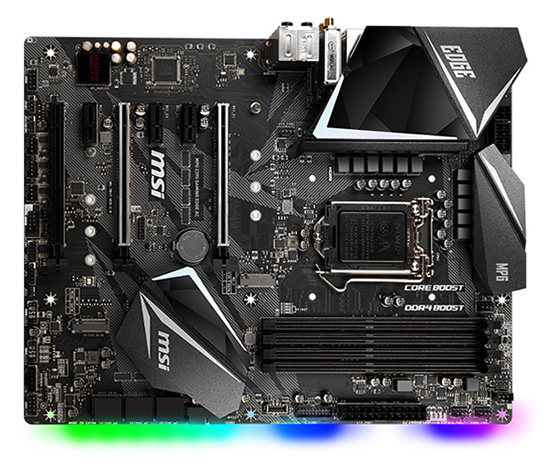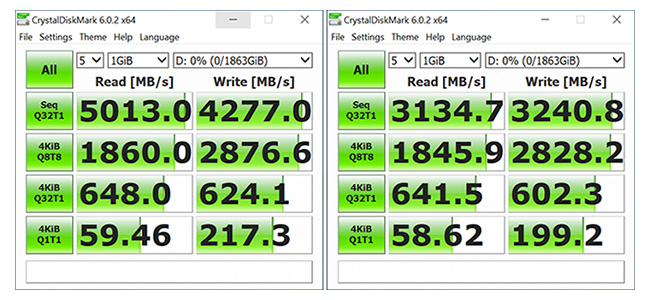Our Aim
To provide you with an overview on New And existing technologies, hopefully helping you understand the changes in the technology. Together with the overviews we hope to bring topical issues to light from a series of independent reviewers saving you the time And hassle of fact finding over the web.
We will over time provide you with quality content which you can browse and subscribe to at your leisure.
TekSpek 's

PCIe 4.0
Date issued:
A number of components within a modern PC use a high-speed interface to communicate with one another. Known as PCI Express, or PCIe (Peripheral Component Interconnect Express), it is the conduit that links the motherboard to devices such as graphics cards, solid-state drives (SSDs), regular hard drives, Ethernet cards, and high-speed WiFi.

Governed by the PCI Special Interest Group (PCI-SIG), the interconnect's speed is defined by its version and number of lanes that are grouped together to form the physical connector. As you can see on the above motherboard, which is an MSI MPG Z390 Gaming Edge AC based on the latest Intel Z390 chipset, PCIe is presented in a number of ways. The three longer slots - two silver, one black - group 16 lanes together for fast transfers between, ostensibly, graphics cards and the motherboard. While supporting a maximum of 16 lanes, these slots also accommodate peripherals equipped with eight, four, two, or one lane.
Meanwhile, the three shorter black-coloured slots offer only a single lane for peripherals that are less sensitive to high-speed connections. Last but not least, modern motherboards usually have a couple of M.2 NVMe SSD slots that can use four PCIe lanes each. In general, graphics cards need the greatest number of lanes, usually 16, while SSDs use four lanes, and all other components either one or two lanes.
Considered the motorway network of a motherboard, PCIe paves the way for a number of components to work at their peak potential. As is the norm in the computing industry, faster is almost always better, so the PCI-SIG group, composed of over 900 companies, has been increasing the speed capability of every subsequent PCIe generation.
A good question is how has PCIe has evolved over time? Let's find out.
| Version | Transfer speed | x1 | x2 | x4 | x8 | x16 |
|---|---|---|---|---|---|---|
| PCIe 1.0 | 2.5 GT/s | 250MB/s | 500MB/s | 1,000MB/s | 2,000MB/s | 4,000MB/s |
| PCIe 2.0 | 5 GT/s | 500MB/s | 1,000MB/s | 2,000MB/s | 4,000MB/s | 8,000MB/s |
| PCIe 3.0 | 8 GT/s |
984.6MB/s |
1,970MB/s | 3,940MB/s | 7,880MB/s | 15,750MB/s |
| PCIe 4.0 | 16 GT/s | 1969MB/s | 3,940MB/s | 7,880MB/s | 15,750MB/s | 31,510MB/s |
Practically all of today's motherboards use the PCIe 3.0 specification that offers up to 15,750MB/s transfers when run on a x16 conduit (16 lanes) primarily for graphics. That is enough bandwidth to move information in and out of the GPU at high resolutions and high refresh rates. In fact, that is enough to provide a seamless 4K60 experience on the latest cards and monitors. Halving the lanes halves the bandwidth, meaning a PCIe 3.0 x4 interface, typically used for NVMe-based SSDs, offers almost 4GB/s of bandwidth.
Announced in November 2011, PCIe 4.0 doubles the bandwidth per lane and includes improvements in flexibility, scalability and power. It's useful for cutting-edge networking, with Broadcom announcing a 200Gbit (25GB/s) controller in September 2018 - one that makes full use of PCIe 4.0 x16 for best-in-class speeds.

It is inevitable that consumer PC platforms will make the switch to PCI 4.0 at some point in the near future. AMD has already done so, actually, with its brand-new Ryzen 3rd Gen CPUs and accompanying X570 chipset, and this move opens up new possibilities for content creators and gamers.
Having twice the bandwidth as PCIe 3.0 offers incremental performance benefits in high-resolution gaming. The biggest benefit, however, is with respect to storage speeds.
Here's a Corsair MP600 2TB NVMe M.2 SSD equipped with the latest Phison PS5016-E16 controller. It's benchmarked on an Asus Crosshair VIII Hero motherboard based on the X570 chipset. The left-hand benchmarks are run with the chipset's NVMe drive configuration set to PCIe 4.0 x4, whilst the right-hand benchmarks take in traditional PCIe 3.0 x4 common on most premium motherboards.
The drive is hardly slow in either instance, of course, yet the doubling of bandwidth afforded by PCIe 4.0 is reflected via best-in-class sequential transfer rates. Want supreme speed? PCIe 4.0 is the way to go, with a whopping 60 per cent bump in read speed.
The faster speed of PCIe 4.0 removes bottlenecks present in the upper echelons of the enthusiast PC space. Solely available in the consumer ecosystem on the AMD AM4 platform consisting of Ryzen 3rd Gen processors and X570 chipset, it is the way to go for super-fast performance in every PC scenario.